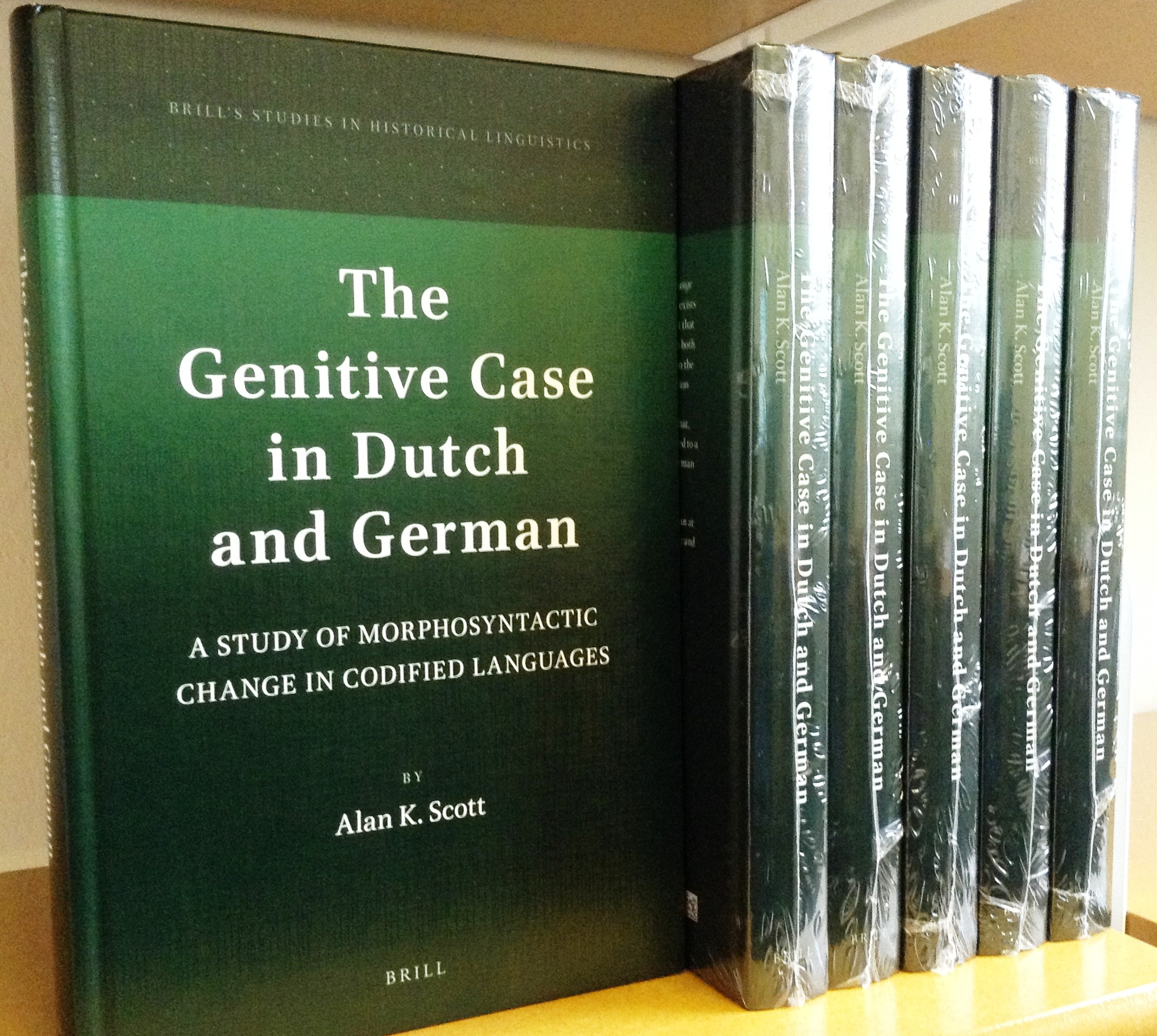
03/01/2014, by CLAS
A Most Curious Case: The Trials and Tribulations of the Genitive in Dutch and German
In the 19th century, the Dutch genitive case was referred to as the ‘holy case’ by the poet and novelist Jacob van Lennep (1802-1868) because, like certain sacred names in Judaism, it was written but not spoken. By this, he meant that the genitive occurred still in careful written language but that it had all but vanished from spontaneous spoken language. A 1914 German grammar book lamented that the genitive was the ‘most misused’ of the German cases while, more recently, a popular German book on language has claimed in its title that ‘the dative is the death of the genitive’. In short, the genitive case has tended to attract attention, not to mention concern for its wellbeing.
A new monograph by Dr Alan Scott (from the Department of German Studies), an output of his research project funded by the Leverhulme Trust, explores the development of the genitive in Dutch and German from the early modern period up to the present day. The Genitive Case in Dutch and German: A Study of Morphosyntactic Change in Codified Languages has just been published by the Dutch publisher Brill in the series Brill’s Studies in Historical Linguistics.
At first, in the Germanic languages relations between noun phrases in sentences were indicated with morphological case marking: particular endings or particular forms of articles showed the role of a noun phrase in the sentence. The main role of the genitive case was to mark one noun phrase as the ‘possessor’ (in a wide sense) of another noun phrase; additionally, some verbs assigned an object in the genitive case, and it was also used to mark the noun phrase following certain prepositions and adjectives.
In the Germanic languages, the system of morphological case marking weakened over time, with English and the Mainland Scandinavian languages having lost theirs by the Middle Ages, before their standardisation. Dutch and German retained a case system – albeit in some disarray – at the time of the onset of standardisation in the 16th and 17th centuries. Drawing on data from historical and contemporary sources, such as personal letters and diaries, newspapers, transcribed speech, and online chats, Dr Scott’s new monograph shows how a case system which is on its way to extinction is preserved and revitalised when standardisation enters the picture.
In Dutch, coinciding with the beginning standardisation of the language, there was a sudden increase in genitive use in careful writing in the 16th and 17th centuries, with a weaker increase a century later in personal letters and diaries. The Dutch genitive was preserved – at least, in careful writing – and a fragment has survived through to the present day. An explanation is proposed in the monograph for the unexpected survival of this fragment, which had not previously been analysed in depth.
In modern German, the genitive case has become a poster child of perceived language ‘decay’. While this perception doubtless arises from the fact that the genitive is almost never the only means available for expressing a particular meaning, the monograph shows that in almost all situations –except the most informal language use – the genitive actually dominates the alternative constructions.
The monograph is aimed not only at those with an interest in the genitive case, but to all with an interest in language change, the history of the (west) Germanic languages, and the standardisation of languages.
No comments yet, fill out a comment to be the first

Leave a Reply